Marc is a travelling sketch artist who now lives in Montreal. He has sketched and painting many a scene all over the world, all of which are beautifully drawn in his unique, fluid style. Each piece perfectly captures the atmosphere of the place it represents, bringing cities and people to life. I’m excited to share Marc’s work with you, so prepare yourself (it’s a long’un!).
Your sketches have a very unique style. How did this develop?
Well thanks  I think everyone arrives at their personal visual language after enough miles of pen on paper.
I think everyone arrives at their personal visual language after enough miles of pen on paper.
In part my sketching approach comes from my day job as a conceptual designer for video games and film. This is a field where we’re called on to sketch as quickly as possible, yet at the same time to be descriptive. We are usually tasked with visualizing something that doesn’t exist – can’t be copied or photographed – and explaining to other artists how this thing is to be built. People have to take your drawings and make digital sculptures and animation that bring everything to life.
So, given the need-for-speed and the industrial design mentality of the concept artist, with my field work I’m always looking at capturing as much information as quickly as possible. I think of it as documentary film-making on paper.
Living museums, these sail powered wooden ships visit Montreal once a year.
I think my field sketching work is becoming more and more expressive – less ‘correct’, more impressionist. I like that I don’t have to worry about being so accurate. I can have more fun just sketching for enjoyment. But I still have that instinct to convey what I’m seeing. To use the pictures to put people in that place that I’m recording.
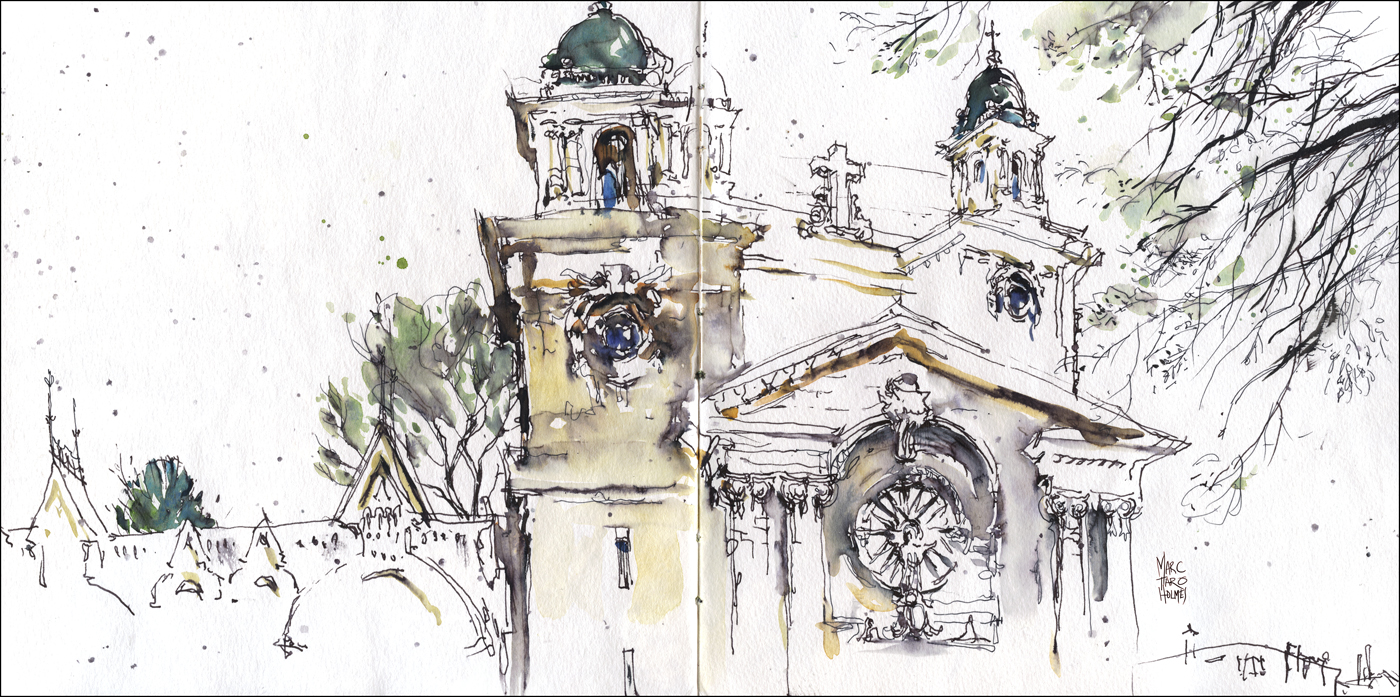
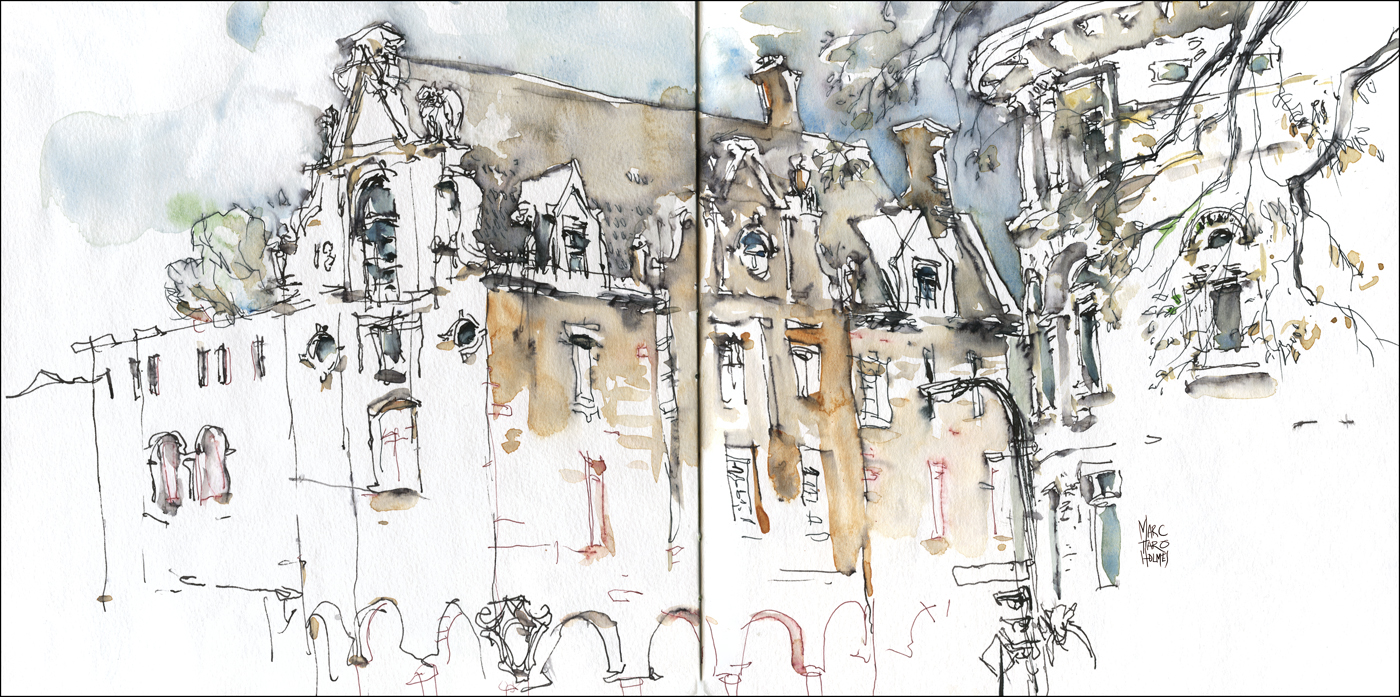
Washable ink and watercolor, sketches from Griffintown, Montreal
Let’s talk about process. What steps do you take when creating each piece?
Well, it’s not always the same – I work in different ways depending on my mood. But it’s probably true my home base is pen and ink followed by watercolor wash. Lately, I’m getting more into painting as opposed to drawing, but that’s not always conducive to traveling. Painting is like a stand-and-deliver thing where you’re three or four hours on one location, and you’ve got all this gear, (easel, tray, folding stool). With the run-and-gun travel sketching, it’s all about getting down a gestural impression as fast as possible, then refining until you run out of time.
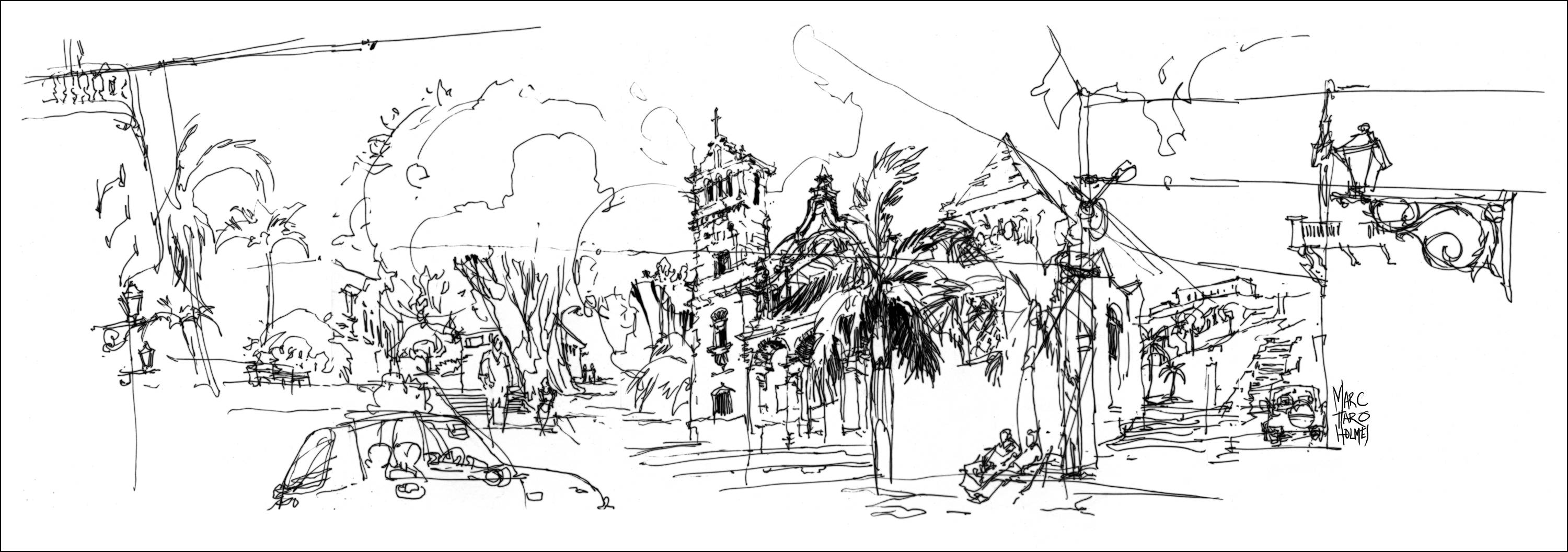
Here’s an example of a speedy sketch – just a little courtyard in Santo Domingo – you can also see here my trick for making panoramas out of multiple pages. More on that here.
When you’re travelling in some exotic location, you’re always on a ticking clock, always pressed for time. Like any tourist I suppose. Any picture you stop to sketch is another you don’t have time for. All to soon you have to head for home.
If there’s a person doing something in the shot, you can pretty much bet on them leaving right in the middle of the sketch. Or if you’re drawing some beautiful shadows – the light is going to slip away on you.
So I always aim to get a big loose scribble down in the first few moments – sometimes in pencil, but it’s freshest if it’s directly in fountain pen or ballpoint.
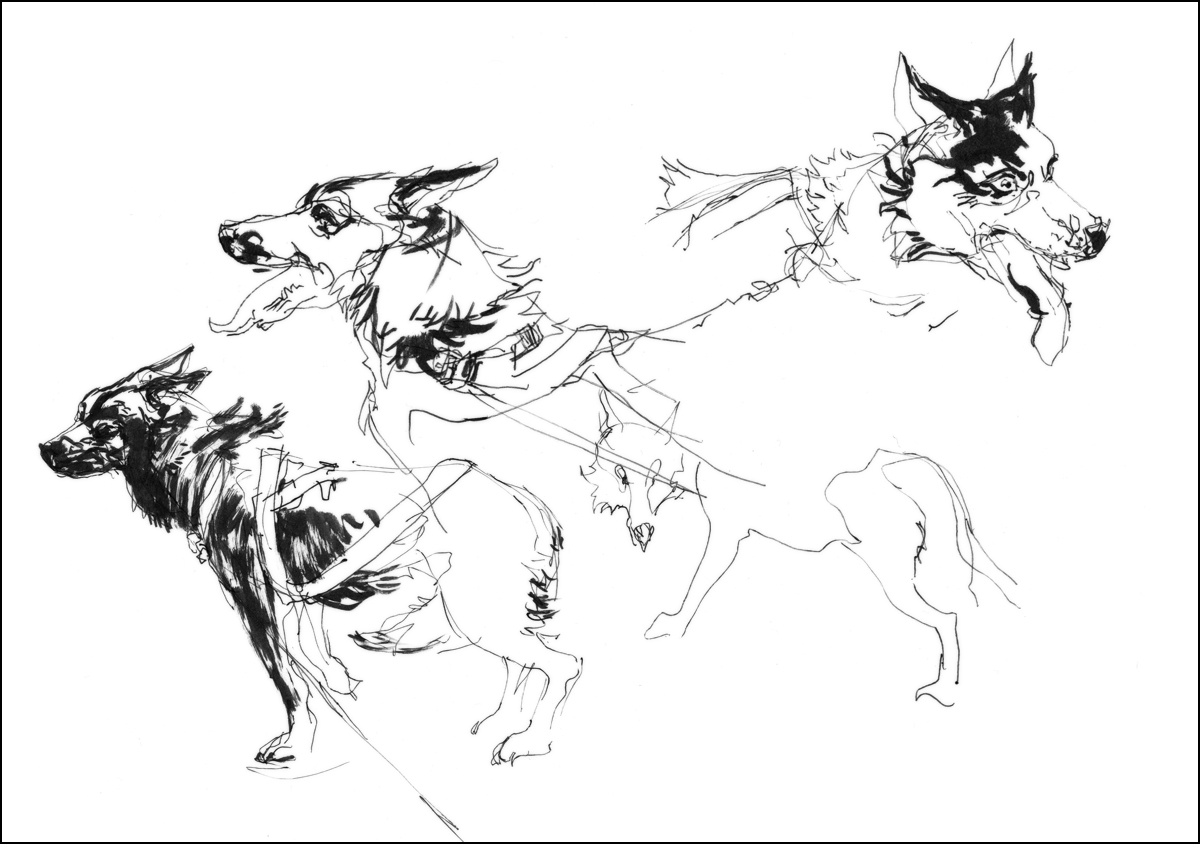
Sketching at a dog sledding event in Montreal, West Island
I keep it loose, just the big shapes, leaving out the fine detail (faces, hands) – then if time allows I can get those details in a second pass. This way when your subject leaves, or a truck parks in your face, you at least have a base for finishing your drawing the hard way. Sometimes you can pull a sketch out of the fire by using a different person to finish, or moving to a new vantage point. Having that gesture drawing first is your road map.
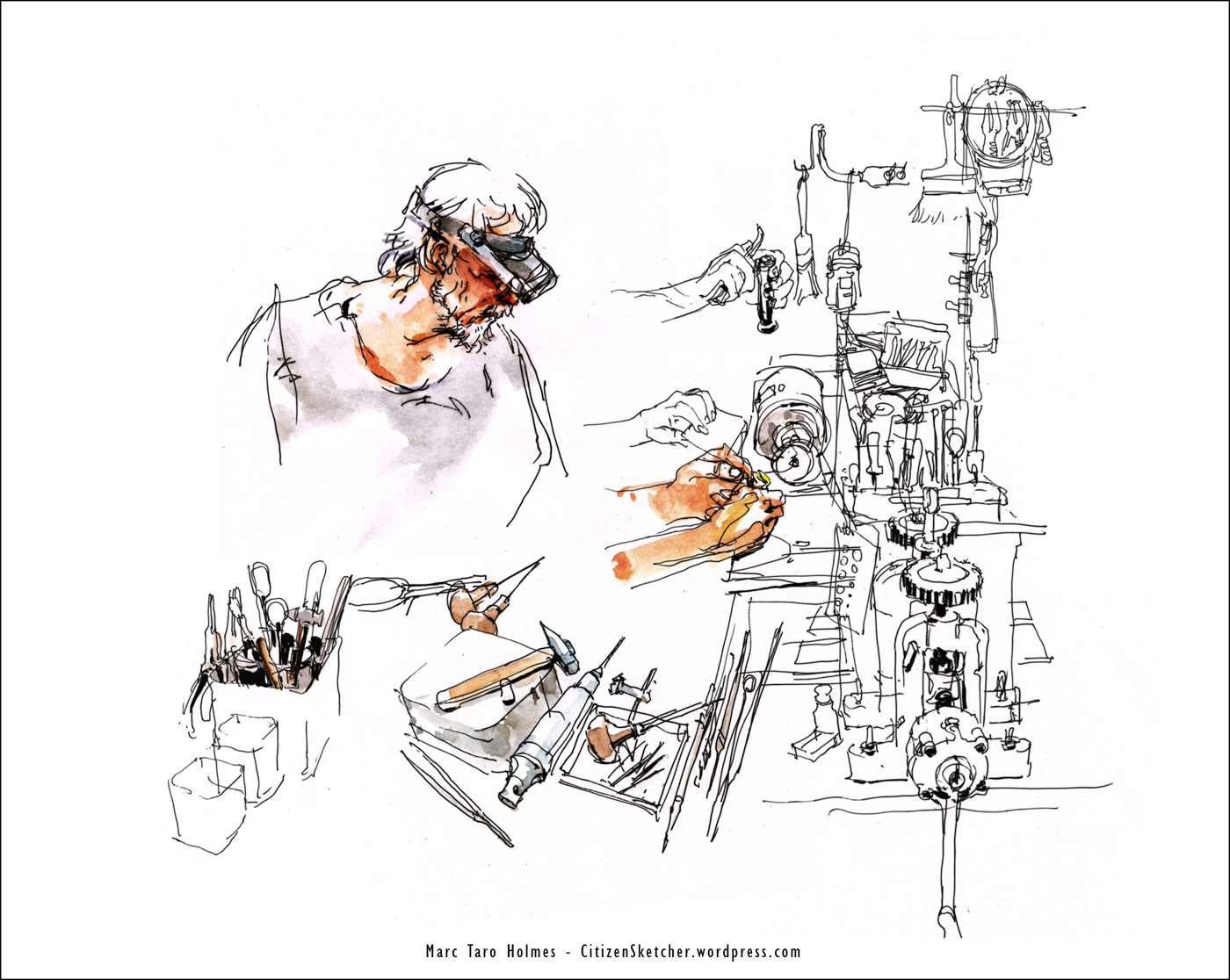
Sketching during a visit to a goldsmith’s studio in Montreal
I like to call it “Drawing from the Outside In”. Get the shapes right first, the skeleton of the building, or the silhouette of a person, and add the interior details after.
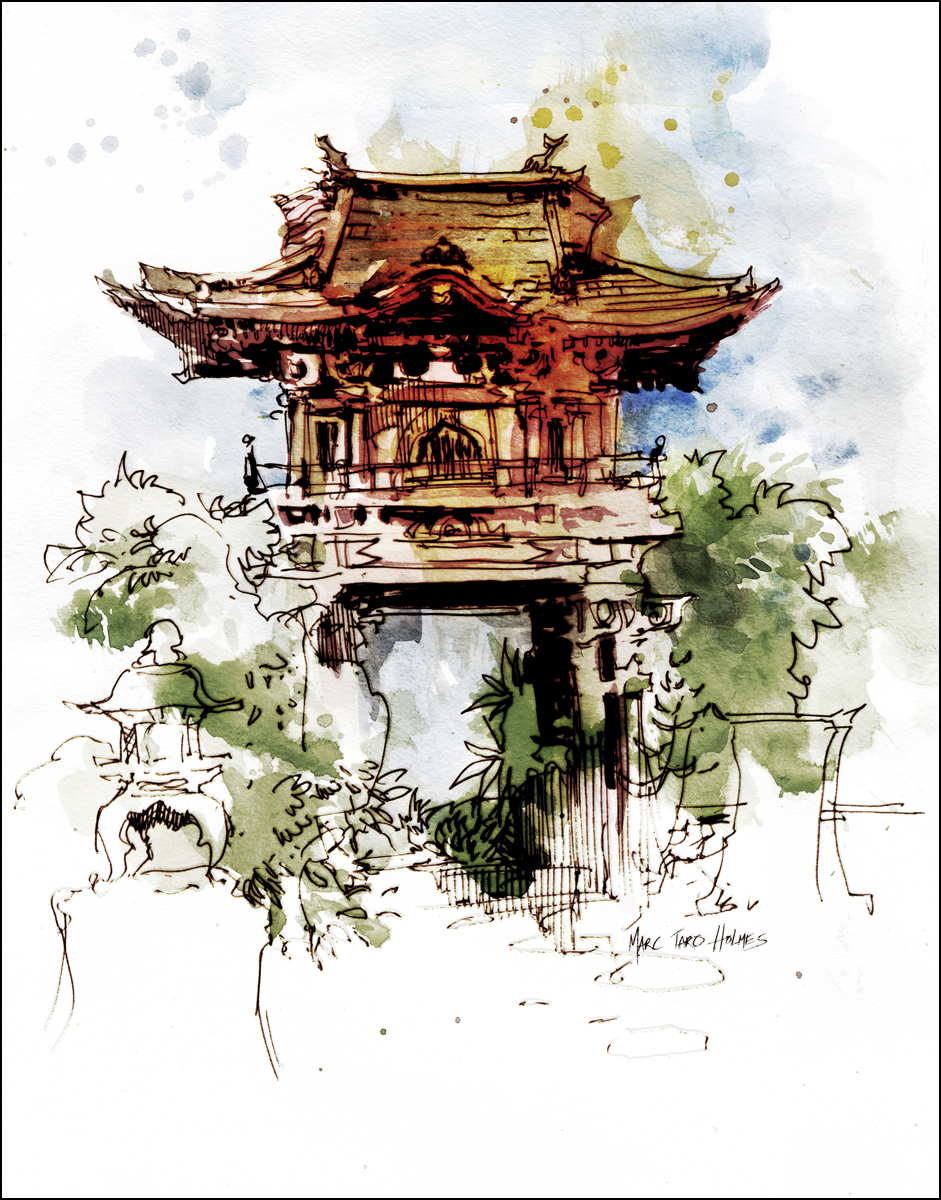
Japanese Garden in Golden Gate Park, San Francisco
Sometimes I plot reference points. Just dots that mark the outside corners of an object. What they call the ‘extents’. Maximum height and width, points where the stories of a building make horizontals, or where the peaks on the roof stand out. Then I can scribble the real drawing over these guide marks at lightning speed, making a fresh drawing while staying inside of the ‘box’. I never want a stiff drawing. That’s the highest priority – a fresh, living , breathing sketch. Otherwise I’d just take a photo 
These ‘anchor points’ also make sure I’m composed well on the page. I can’t tell you, as a beginner, how many times I started drawing a doorway, then ended up running out of page before I got to the roof line.
Here’s a blog post that really goes in to my watercolor sketching technique step-by-step. Sometimes though, I do see a thing that is so interesting to me, that I have to paint it, even if it means spending an afternoon in one spot. Like this sketch of the pigeons around the statue of Columbus in Santo Domingo.
Why do you choose to sketch whilst you travel?
Drawing is my way of thoroughly experiencing the world. If you’re drawing something, you’re really looking at it. Studying how it’s made. Thinking about its history, its place in the culture. Drawing puts things deep into memory. Visual ideas come back years later from the memory banks. If you do other kinds of studio art, sketching enriches your whole practice.
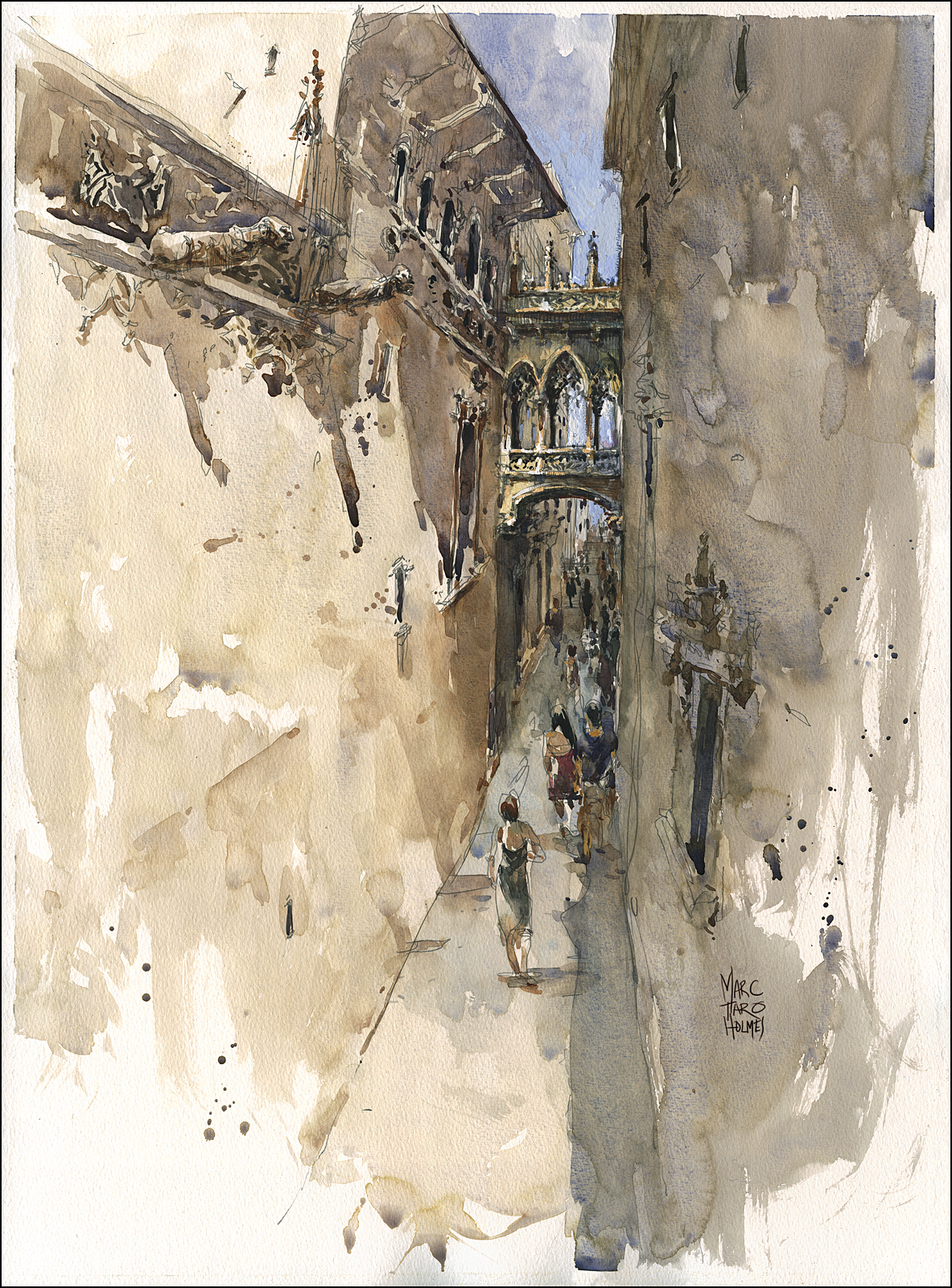
Bisbe Street Bridge, Gothic Quarter
But even as a casual past-time, it’s great for keeping your brain healthy, staying curious, remaining alert. I’m getting older, and certainly my parents are starting to show their vintage, so I’m thinking about this kind of stuff a lot these days.
Drawing is hard right? It’s a great challenge for your mind. Like music or sport or anything where you train and strive for perfection – there’s always more to learn, greater skills to master. People thrive on open-ended challenge like that.
What do you hope your sketches tell viewers about the places they depict?
I’m always on the lookout for what is unique about a place. Pieces of architectural history, aspects of culture or local customs. Whatever is found there, and nowhere else.
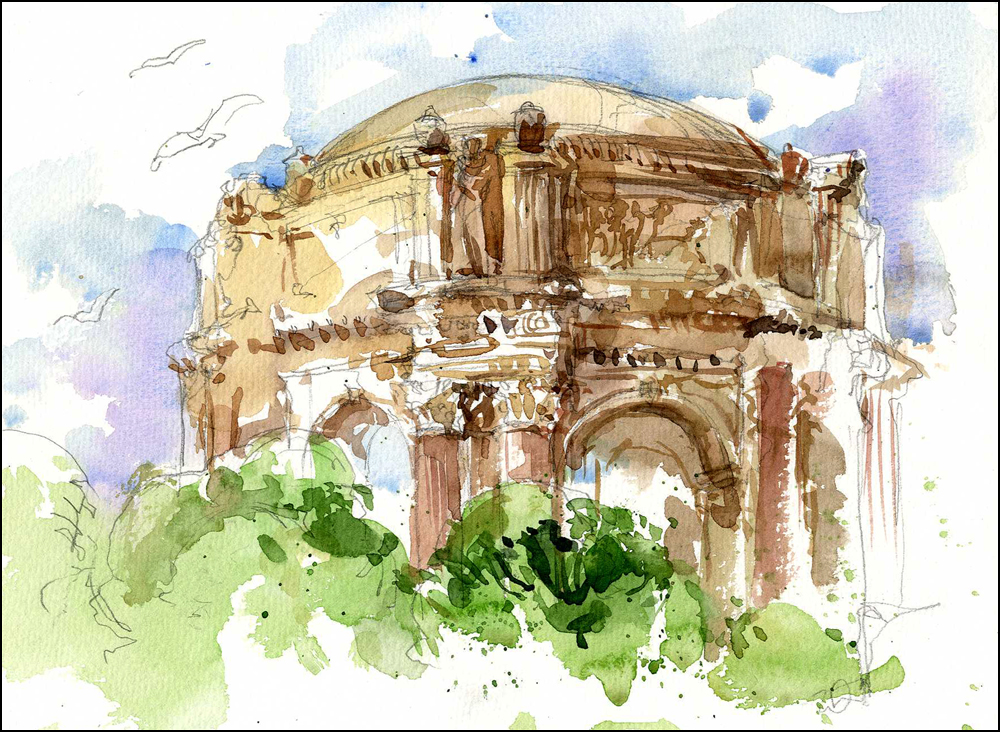
The Place of Fine Arts in San Francisco
When I’m in a foreign city, I usually start with the religious buildings, or any castles, ruins or monumental plazas that might be around. We pretty much only go to places where there’s stuff of this sort to be drawn. There’s a narrative element in old buildings, religious structures, monuments. The sculpture, the decorative carving – stuff we’ve stripped off our modern structures in favor of functionality. So that always draws my eye. You can see the stories in these places.
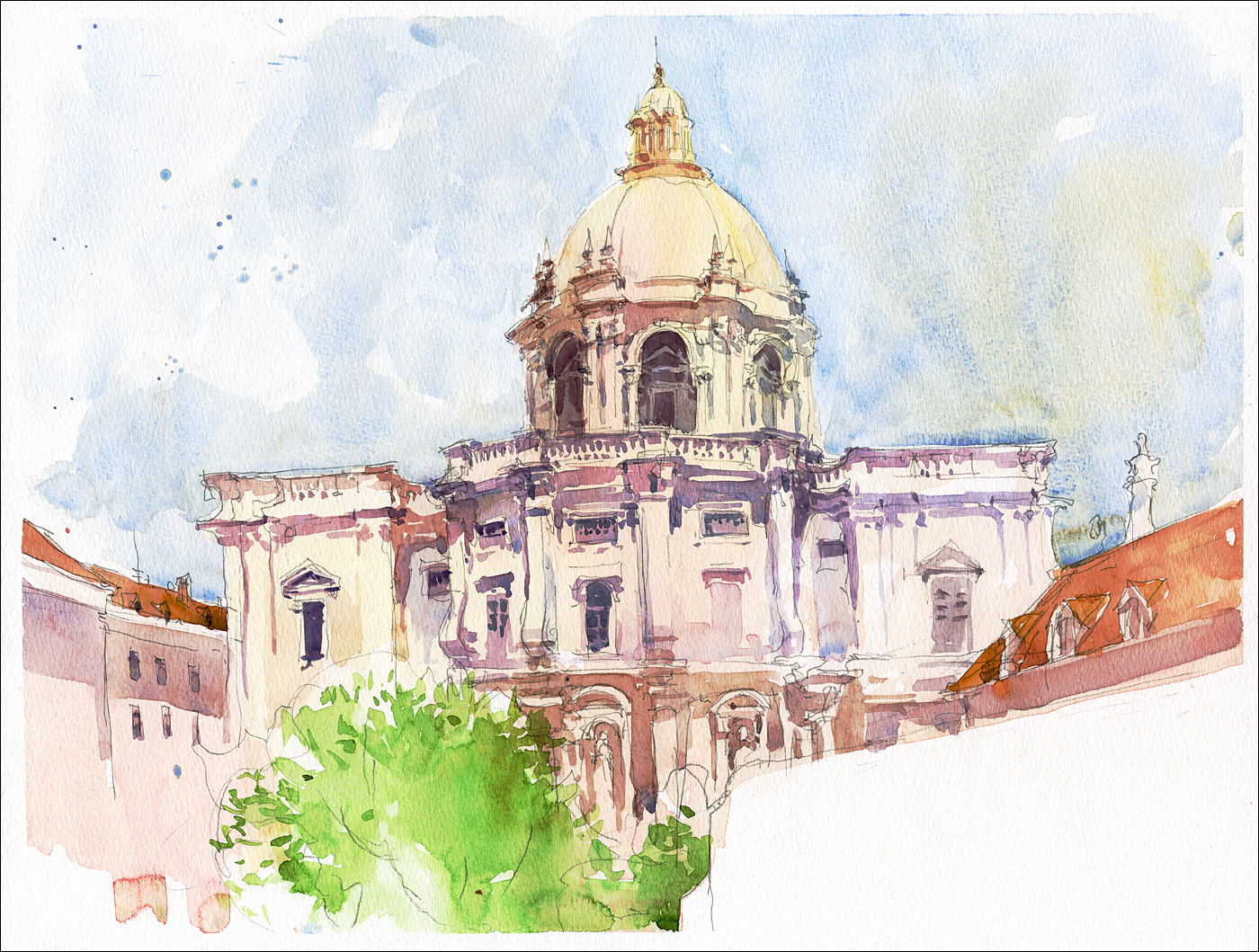
Santa Engracia basilica in Lisbon
So there’s that, plus my own penchant for the dramatic, or operatic. I love it when I find some gothic gargoyle or romantic weepy angel. Ideally covered with ivy or flaking with rust. I can’t help but enjoy these memento mori.
It’s obvious you have travelled a lot. Where has been your favourite place to sketch and why?
Oh well, it’s always wherever I am at the moment. You know how it is with artists. The NEXT drawing will be the BEST EVER. And the one you are doing right now is the worst thing you’ve done (until you pull through, then it’s usually not so bad :). Artists are eternal optimists – otherwise they wouldn’t keep banging their heads against it.
Once you get in the mindset of travel sketching, even a trip to the grocery store can be an opportunity for a work of art.
That being said, I’ll go with the Ankor Wat / Siem Reap area in Cambodia. What better place for a guy like me? Masses of baroque sculpture, miniature temples, and those trees that are growing over everything like alien invaders. Unfortunately I was young when I made it there – so I’m going to have to go back with my new drawing skills. Before it’s all gone to the black market or the passage of time.
Havana Necropolis
Aside from travel, what inspires your work?
So leaving aside the world itself, which is the real inspiration, I’m into all kinds of contemporary art – (lately I’ve been looking at fine art taxidermy). But I suppose I’m into the intersection between pop-art, fine art, and maybe what you’d call graf, or comix. I like people who’re doing work based in drawing, but not limited by physical reality. Drawing is a kind of visual language – it’s like poetry, where painting is prose. You have fewer cues as to ‘realism’ – so a drawing can be suggestive. Just talking about people I’ve run across in the last few weeks, Mu Pan, Ikeda Manabu or Rene Almanza. The web brings you all this great art – there’s too many people to list.
Also painters who are doing narrative work – people like Kent Williams, Walton Ford or Chris Berens.
That doesn’t mean I don’t still love the old standbys. Went to a John Singer Sargent watercolor show recently that was pretty tremendous (more here). You can’t turn your back on the old masters.
If you could sketch anywhere in the world, where would it be and why?
I couldn’t possibly put a limit on it! More like, if I had my druthers I’d be on the road full time, travelling and sketching and sending the art out from wherever I end up. Can you set that up for me? That would be the life.
Finally, do you have any tips for readers who might be interested in sketching whilst they travel?
Well – here’s the main one. Check out Urban Sketchers.
It’s an international group of artist/bloggers who draw on location. I been involved since (almost) the beginning, was on the board of directors for the first few years and I’m still a volunteer instructor at the international symposium.
It’s grown into a worldwide thing. There are urban sketching groups (#USk) in almost every city around the world. If you check out this list of correspondents you can probably find someone in any destination you might be heading. They could put you in touch with the local sketchers. There are always sketching events and social drawing things you can join. It’s a wonderful community of artists who are open to meeting new people and sharing their cities with the world. If you’re visitng Montreal, Quebec you can come out with our local group!
Besides that, I’ll plug my own blog if I may; www.citizensketcher.com. Really, there’s so much to say, I’m offloading all my thoughts about field sketching up there. There’s plenty of material if you’re willing to dive down. I’ve got enough notes on field sketching, I’ve got plans for a book project next year.
Just by way of example, here’s a little demo on drawing with watersoluble ink, and here’s one on creating focus in simple sketches. Finally, here’s another one on sketching architecture in watercolor.

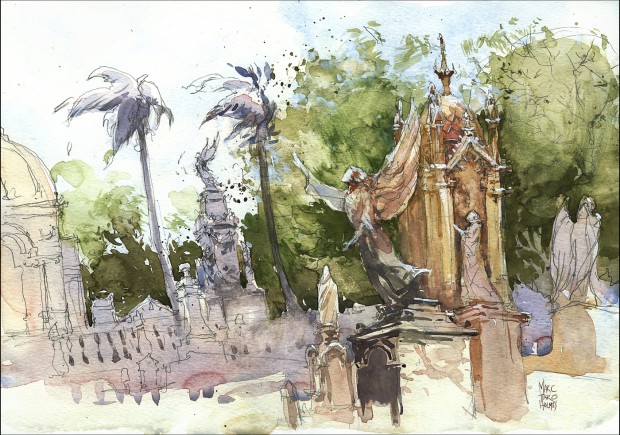
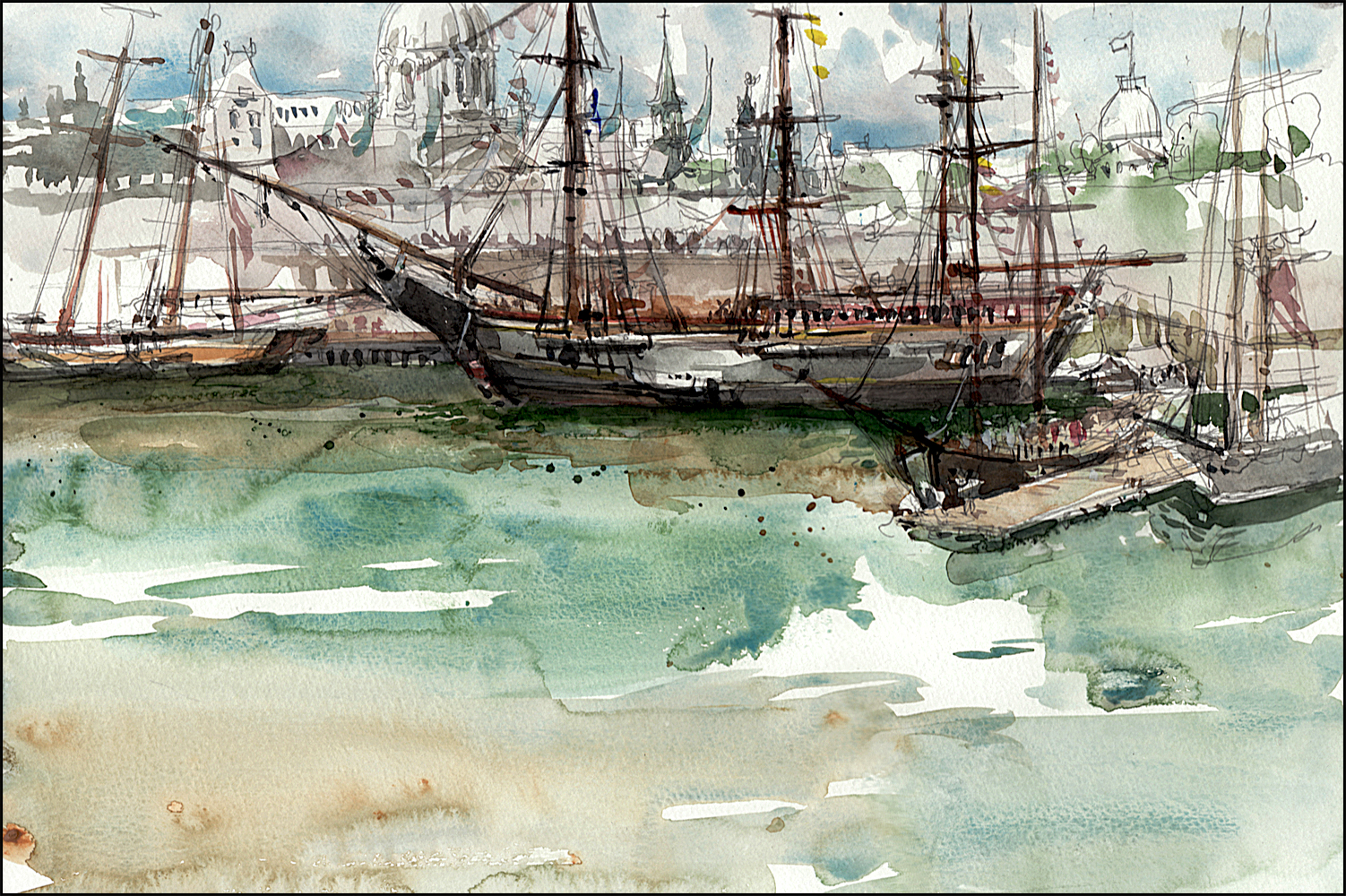
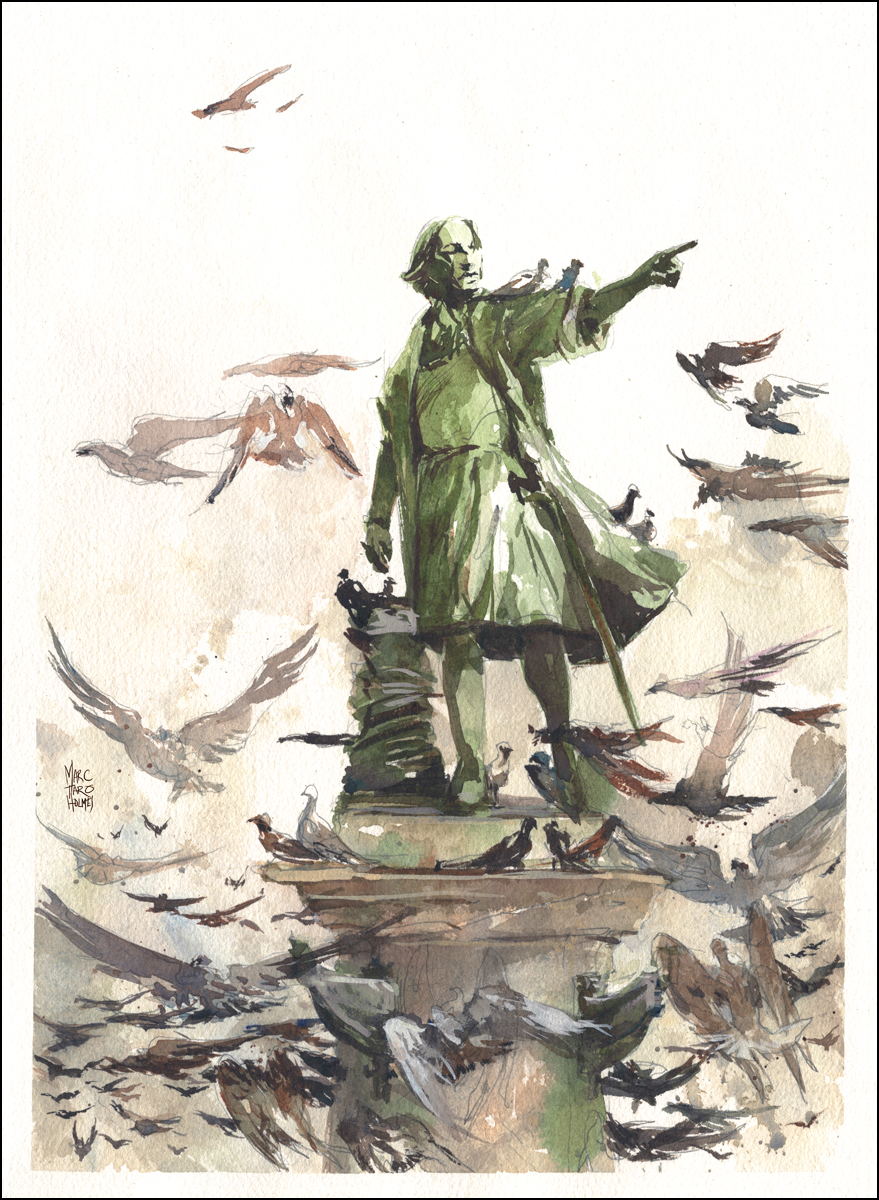
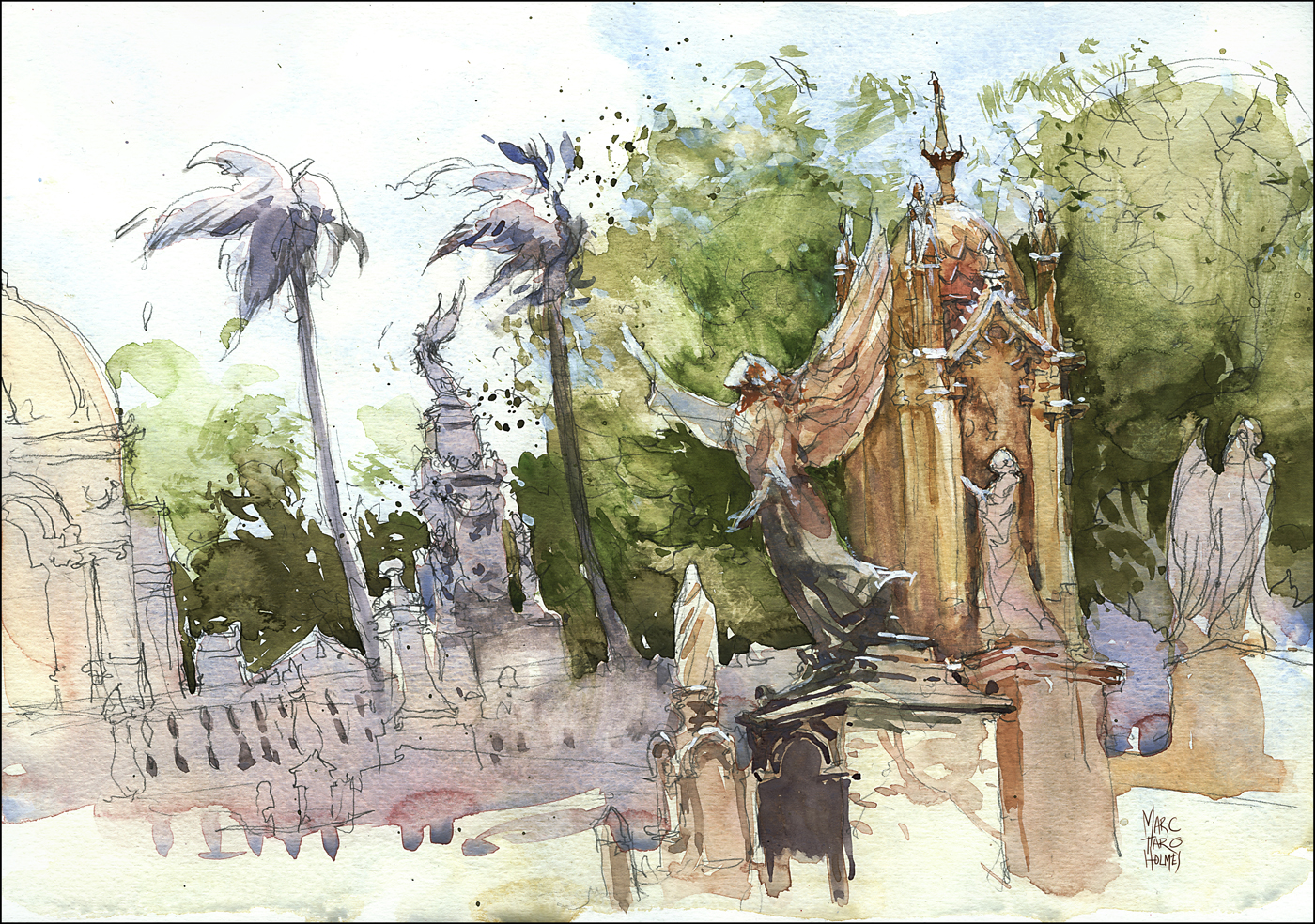
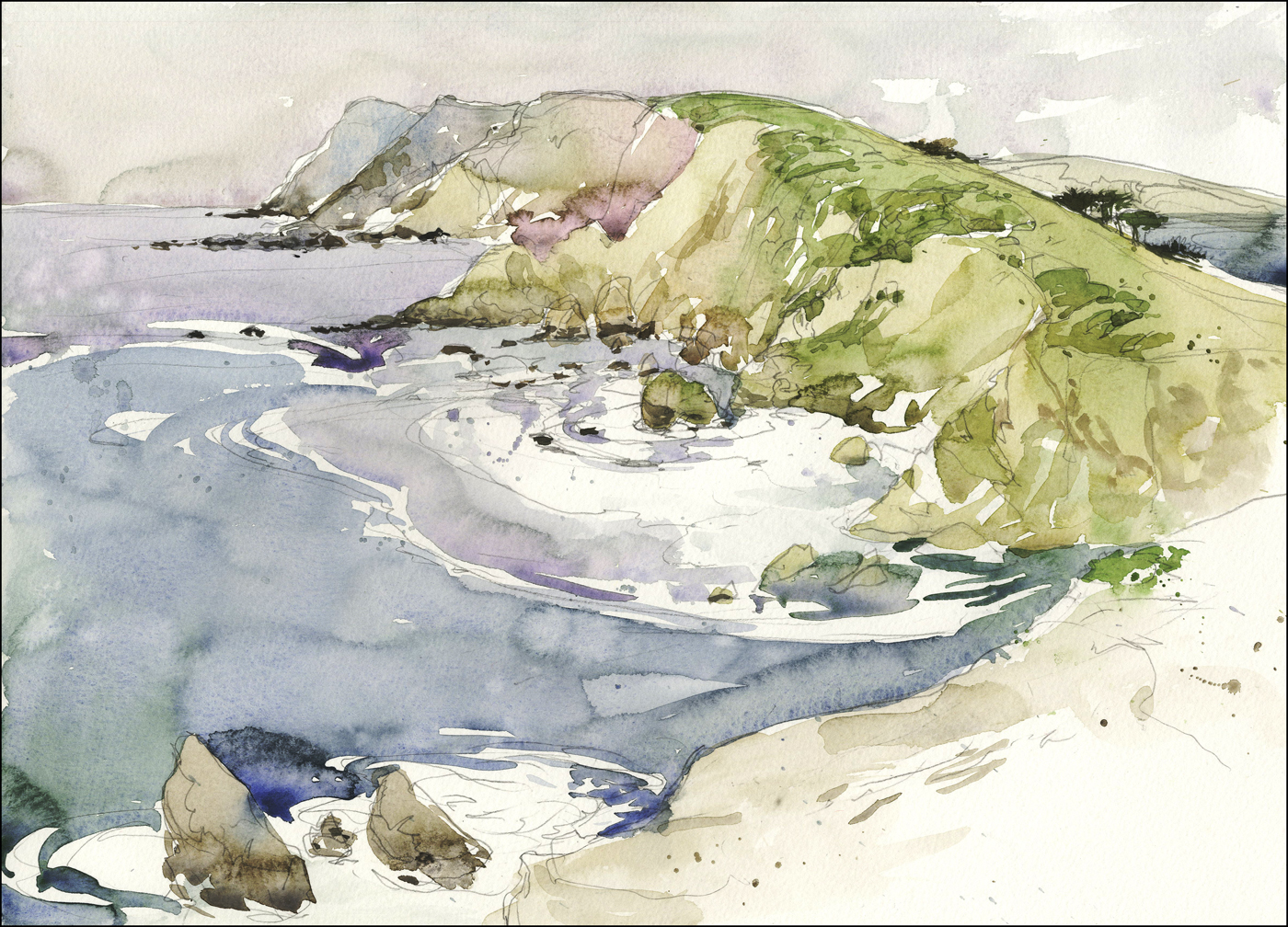
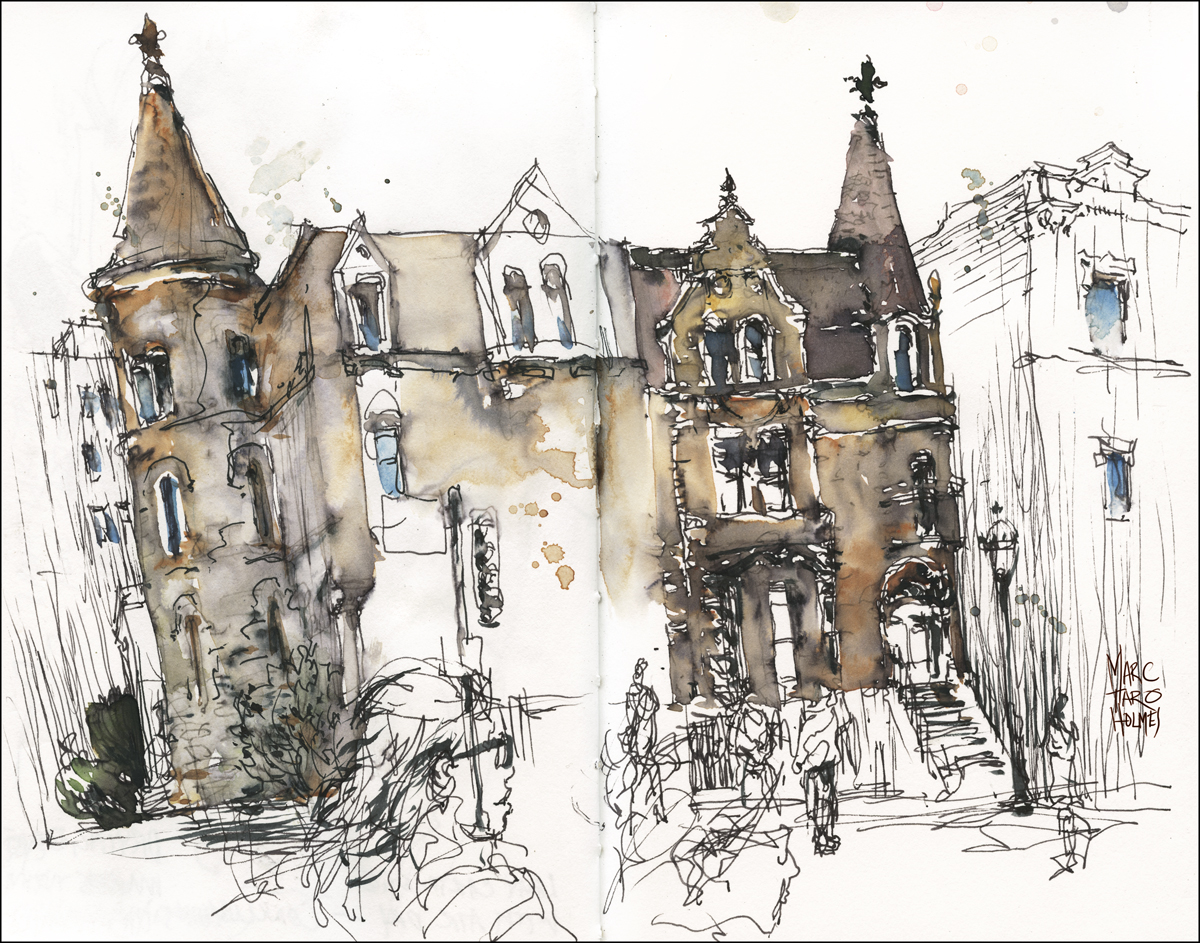


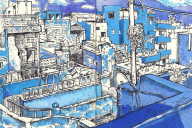
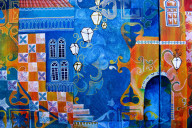
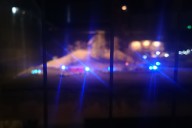





Been a fan of Marc and followed his blog for ages, was privileged to meet him at a sketchcrawl in Savannah Ga this past February.
Yes, Marc’s work is great! Thanks for stopping by Elaine
What a great site and interview. You have opened up my world and my courage to try to sketch. Thank you so very much.
So glad it has inspired you Joleen! I wish you all the best with the sketching – I’m sure you will absolutely love it
Good interview! Marc is a great teacher, too.
The first url for Urban Sketchers is wrong, gets a 404 error. Should be:
http://www.urbansketchers.org/
Thanks so much for pointing that out, Kate! All changed now and it should be working just fine Glad you like the interview… I’m a big fan of Marc’s work so am delighted to be featuring it here.
Glad you like the interview… I’m a big fan of Marc’s work so am delighted to be featuring it here.
Great interview. Wonderful sketches. Hoping to meet up with Marc o e day.
Thanks Martha! Marc’s work is fantastic, right?!